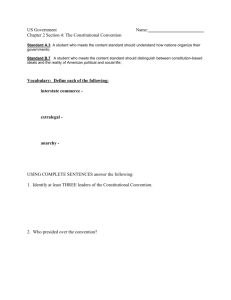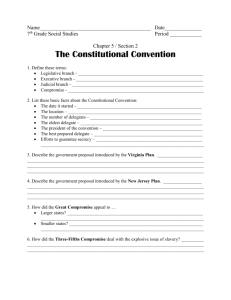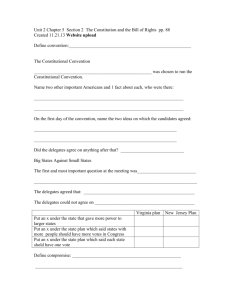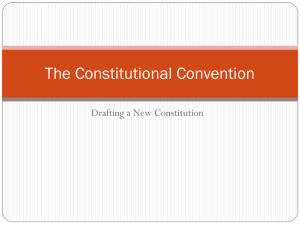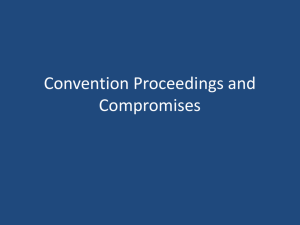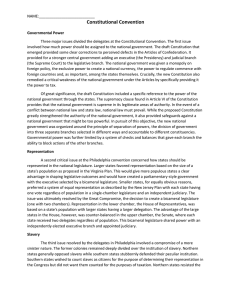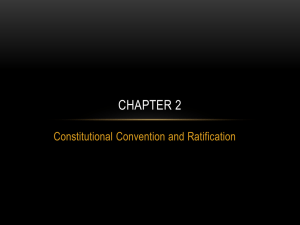Unit 4: A Growing Nation
advertisement
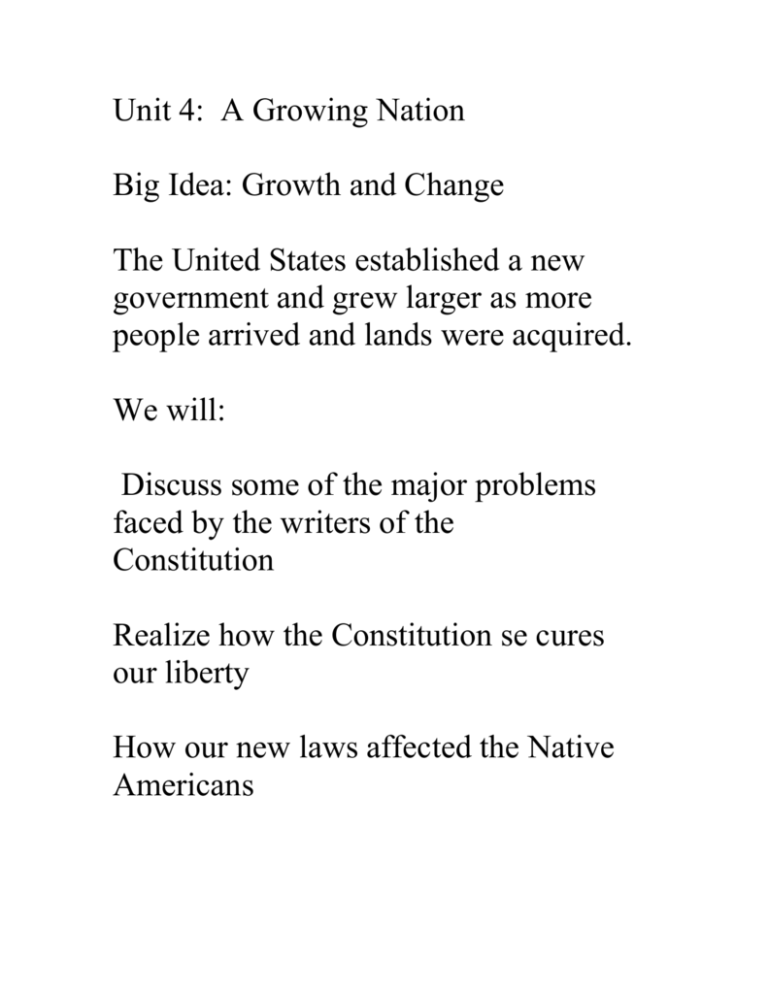
Unit 4: A Growing Nation Big Idea: Growth and Change The United States established a new government and grew larger as more people arrived and lands were acquired. We will: Discuss some of the major problems faced by the writers of the Constitution Realize how the Constitution se cures our liberty How our new laws affected the Native Americans Address some of the changes the United States faced in the early 1800’s Chapter 8: The Constitution Lesson 1: The Constitutional Convention We will: Describe how the Constitution set up the government of the United States Explain the importance of the Great Compromise Vocabulary: Arsenal Bill Federal system Republic Compromise Read: You Are There The Constitutional Convention meets to fix the Articles of Confederation. What’s wrong? Reasons for Change: In 1786 and 1787, violent protests in Massachusetts drew attention to the national government’s inability to keep order. Every state had a powerful governor. There was no national court system to settle any disputes. Daniel Shays- led a rebellion against a Massachusetts arsenal because of the unfair treatment of farmers. Arsenal- A building used by the military as a weapons’ storehouse James Madison Vs Patrick Henry Madison argued that the country needed a stronger national government. Patrick Henry did not agree. He believed that the Patriots had died to stop being ruled by a strong central government. In 1787 all states except Rhode Island sent delegates to a convention in Philadelphia to “fix” the Articles. The Work Begins: At the Constitutional Convention, delegates debated issues, especially the relationship between the states and the national government. In the end, they strengthened the federal system. George Washington was chosen to be president of the Constitutional Convention. Edmund Randolph of Virginia- asked the delegates to do away with the Articles of Confederation and write a new plan of government. Federal System- a system of government where the power to govern is shared between states and a national government. The National or Federal government would have power over matters that concerned the nation as a whole. Republic- the people choose representatives to run the government. The Virginia Plan-(Edmund Randolph) Congress would have two parts, or houses. The number of representatives that a state would have in each house would be determined by the state’s population. The New Jersey Plan- (William Paterson) New Congress would have one house, in which each state would be equally represented. Gave smaller states equal representation. Working Together: Delegates realized that each side had to compromise to complete the Constitution. They agreed on the Great Compromise, which balanced the congressional power of populous states with that of less populous ones. Compromise- to give something up in order to get some of what is wanted. The Connecticut Compromise- twohouse Congress: In one house, representation would be based on population. In the other house, representation would be equal. Bill- an idea for a new law. This could be presented by either house of Congress. However, both houses had to approve a bill before it became a law. Compromises on Slavery: Under the Three Fifths Compromise, a state could count three-fifths of its enslaved residents in determining how many representatives it would have in Congress. Aside from voting, the southern states also worried that the Constitution barred slavery . In order for the Compromise to pass, southern states were allowed to import slaves until 1808. However, after 1808 they could still be bought and sold in states that allowed slavery. Questions 1-4 Page 322
